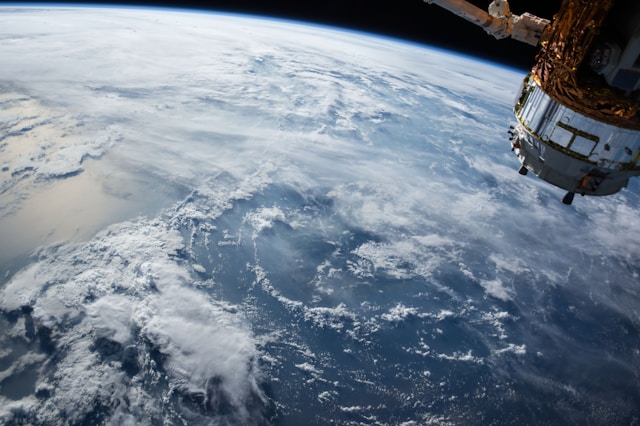The Earth does not rotate around its own axis without changing its direction. There is a slow motion of the axis of rotation called precessional motion. External forces acting on the Earth from the Sun and the Moon cause the axis to deviate from its direction. A large, periodic spin (following the surface of a cone) of the Earth’s axis around an axis perpendicular to the plane of orbit is called precession.

The Earth has a shape that can be compared to a sphere having some thickening in the equatorial belt. Solar attraction tries to twist the Earth’s axis of rotation in such a way that the occultation is in the plane of the ecliptic. The precessional motion occurs at a rate of 50′ per year, so a full rotation will occur after 26,000 years. The direction perpendicular to the ecliptic is called the pole of the ecliptic, the celestial equator is the plane formed by extending the Earth’s equator, while the directions of the axis of rotation are determined by the celestial poles.
Thus, precessional motion causes the celestial poles to circle around the poles of the ecliptic, and move the intersection points of the equator, with the ecliptic. In ancient times, when the zodiac constellations were named, the points of intersection of the equator with the ecliptic were in the constellations of Aries and Libra. (The sun, just during its apparent journey on the ecliptic, crosses it at the points of the vernal equinox-Aries, and the autumnal equinox of Libra.)
Thus, the constellations coincided with the signs of the same name. As a result of the Earth’s precession, the equinox points are moving back steadily, and currently the vernal equinox point is in the constellation of Pisces and will then move towards Aquarius. The point of the autumnal equinox is currently in the constellation Virgo. The names of these points, however, have not been changed. We count the signs of the zodiac from the point of Aries, although they are shifted in relation to the constellations with the same names.
A whole series of physical factors such as the elasticity of the Earth, air currents, precipitation, sea currents that cause the masses of the Earth’s surface to shift cause yet another movement of the Earth-the Earth undergoes some rocking on its axis of rotation. As a result of this movement, the earth’s axis, without changing its direction in space, moves in relation to the earth’s surface. As a result, the latitudes of points on the Earth’s surface fluctuate within 0.5′.





